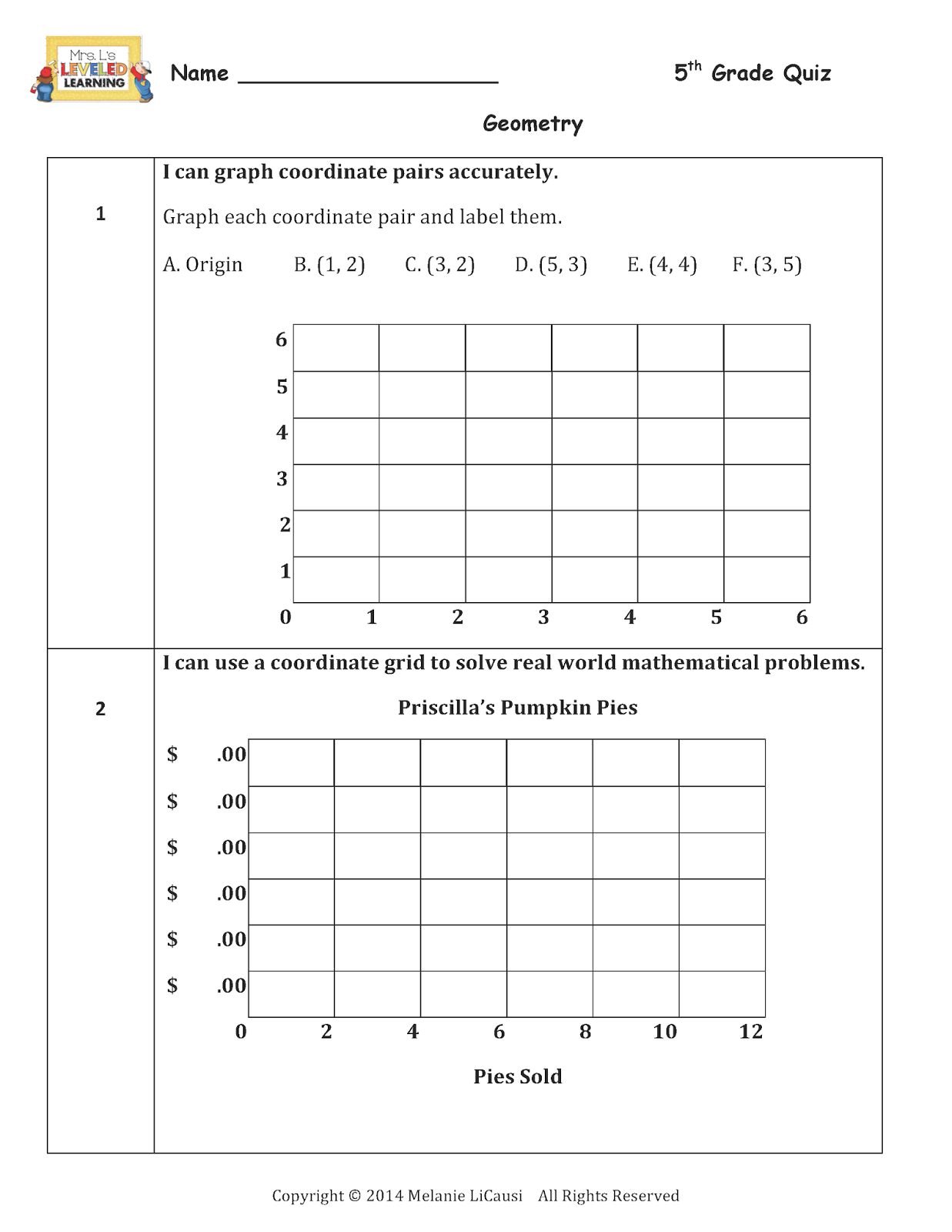The easiest way to keep track of the weekly Raffles is by following Mrs. L's Leveled Learning blog on Blog Lovin', by email Newsletter, or by Facebook.
Click on the links below for this week's Common Core Domain Geometry!
Each Quiz has one math problem for each Common Core standard in that domain. The number corresponds to the standard number. Each problem has the learning goal stated to help kids focus on the goal and make the connection between the quiz, and their work in the standards.
As a visual-spatial thinker, I always found geometry really fun and easy to teach because I could SEE what was being described. The biggest challenge for me and some of my students was the vocabulary! Understanding how the visual representations translate into verbal descriptions, and the huge array of terms for every figure, can be a struggle to memorize. I decided to have my students engage with the vocal by using their imaginations and artistic abilities to create Geometric Kingdoms! This project can be easily modified to focus on the specific Geometry standards for each grade level.
Here's the assignment:
1. Create a map for you Geometric Kingdom, incorporating all of the geometry vocabulary listed below. SKETCH some ideas on the back of an 11×17 paper, and draw the final map on the front side. COLOR if you have time!
2. Your kingdom may include buildings, parks, stores, homes, attractions, landscape features, etc. You may want to organize your objects into the categories based on the vocabulary terms. (Ex. Symmetry Carnival, Angles Park, etc.)
3. You must SHOW and LABEL all of the words in the places where they are represented on your map. (Use your math book, internet, dictionary, etc. to help with definitions and examples.)
Here is the list of terms in the categories we defined:
Transformations (3) reflection (flip), translation (slide), rotation (turn)
Symmetry (3) line of symmetry, rotational symmetry, reflectional symmetry
Lines (9) ray, perpendicular lines, diagonal, line segment, intersecting lines, skew lines, parallel lines, perpendicular bisector, midpoint.
Angles (12) right, supplementary, vertex, angle bisector, acute, obtuse, degrees, vertical, adjacent, complementary, straight, central.
Triangles (6) obtuse, right, acute, scalene, isosceles, equilateral.
Circles (5) chord, sector, diameter, arc, radius.
Shapes (4) semicircle, similar, congruent, plane.
Polygons (9) polygons, regular polygons, rhombus, square, rectangle, trapezoid, parallelogram, quadrilateral, tessellation.
Word Cells (7) penta-, hexa-, hepta-, octa-, nona-, deca-, dodeca-. (The word cells can be applied to polygons –flat shapes, or polyhedrons – solid shapes).








